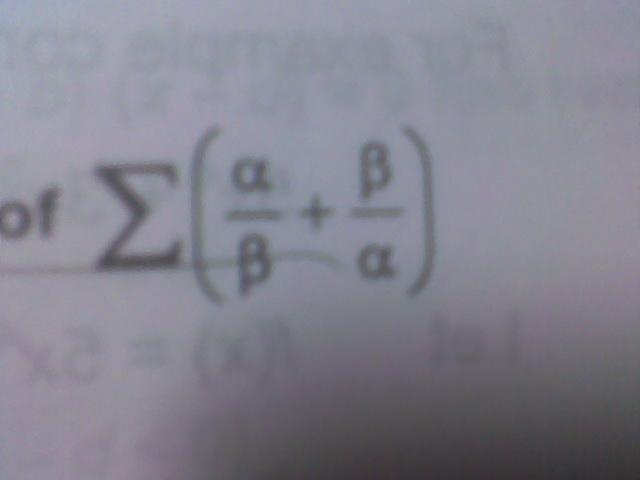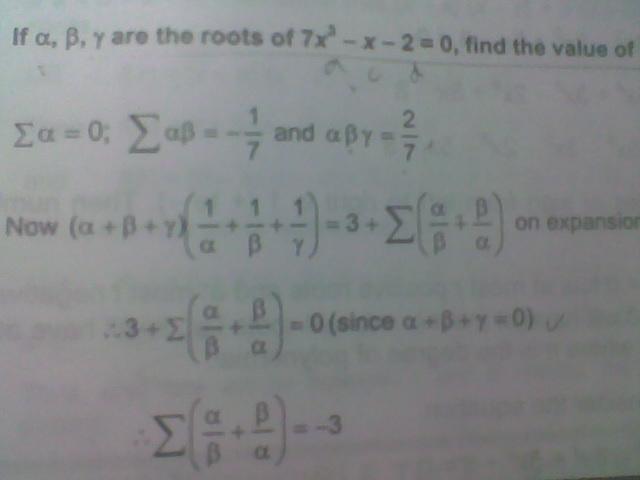What does simply \sum\left({\frac{\alpha }{\beta }}+\frac{\beta }{\alpha } \right) denote???
15 Answers
Lokesh Verma
·2009-03-24 07:05:24
if there are 4 of these
a, b, c, d
the nit will mean
(a/b+b/a) + (a/c+c/a) + (a/d+d/a) + (b/c+c/b) + (b/d+d/b) + (c/d+d/c)
Anirudh Narayanan
·2009-03-24 07:08:05
Mani Pal Singh
·2009-03-24 07:42:53
MR PLAYPOWER TUNNE FALTU MEIN HI TENSION DE DI
DONT FOLLOW HIM
SOLVE URSELF AFTER THE 3RD STEP
paromita89 paromita
·2009-03-24 07:47:33
sir wat u said.. 'put remove' ? 'with d' ? .. i dint get u sir... wil u pls explain agin ...
Subash
·2009-03-24 07:53:42
just multiply the two terms in the LHS
see what you get it will be 3+ a cyclic expression in α,β,γ
Lokesh Verma
·2009-03-24 08:02:42
I meant remove ;)
more explicitly it means
(\frac{\alpha }{\beta }+\frac{\beta }{\alpha })+(\frac{\alpha }{\gamma }+\frac{\gamma }{\alpha })+(\frac{\beta }{\gamma}+\frac{\gamma }{\beta })

